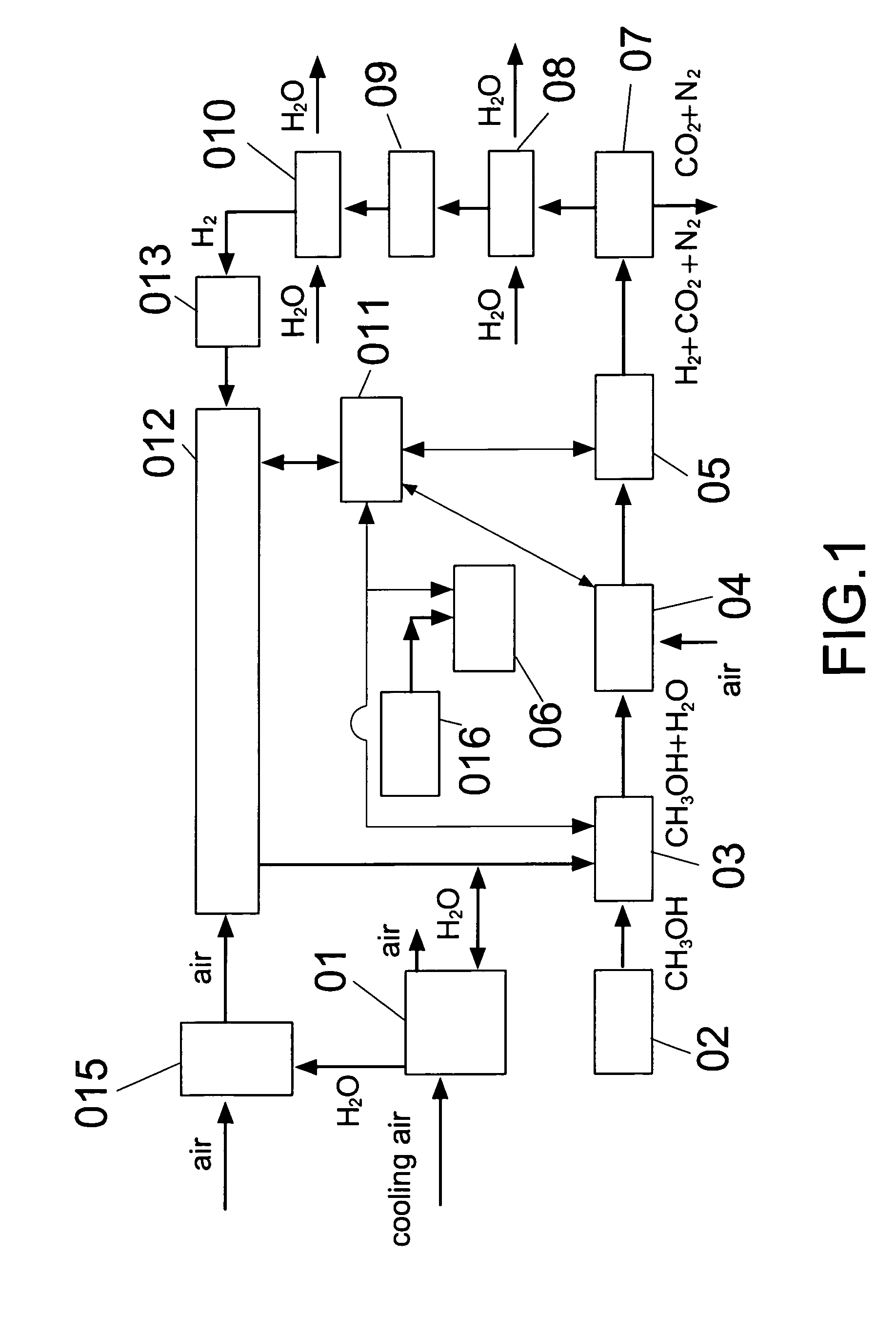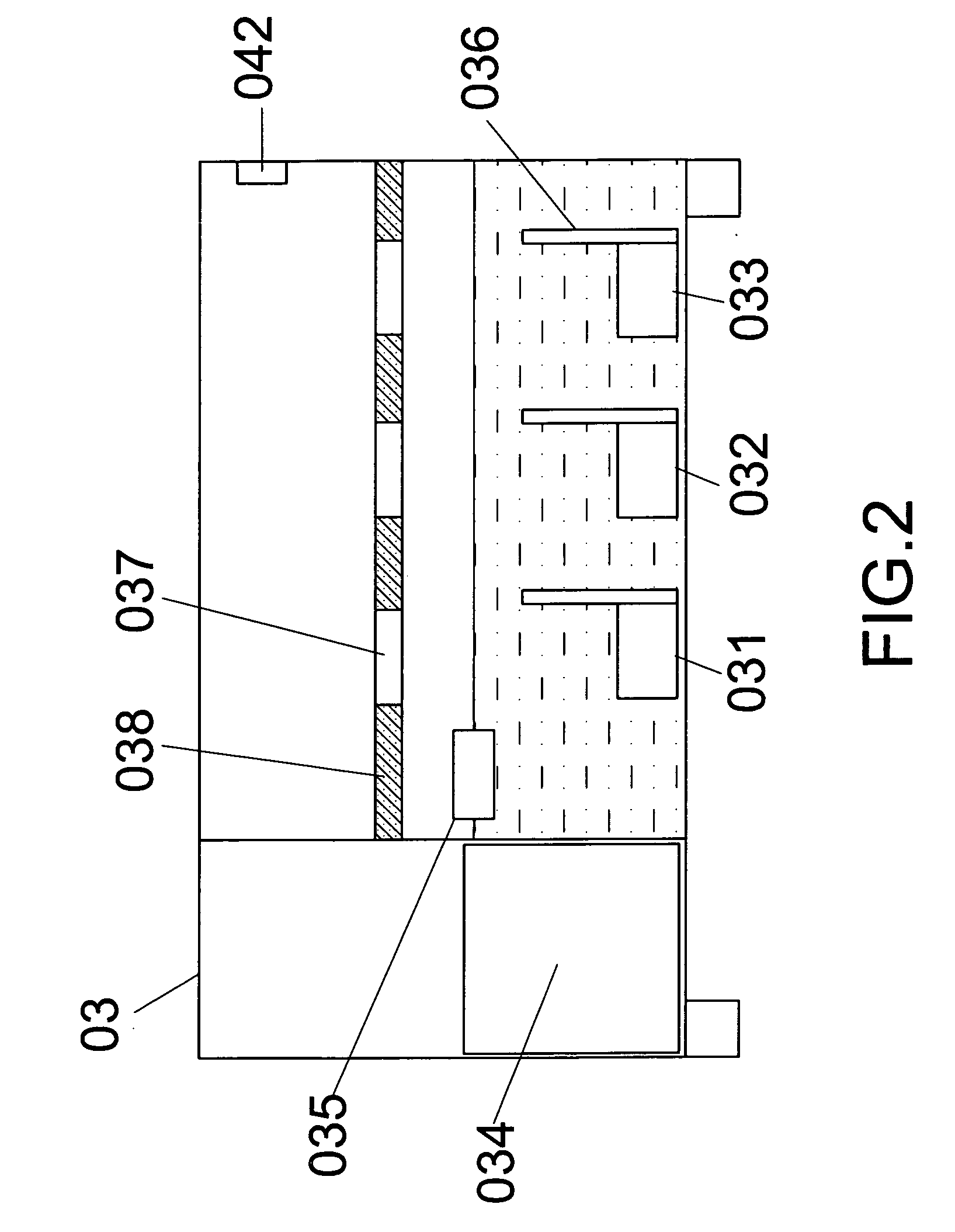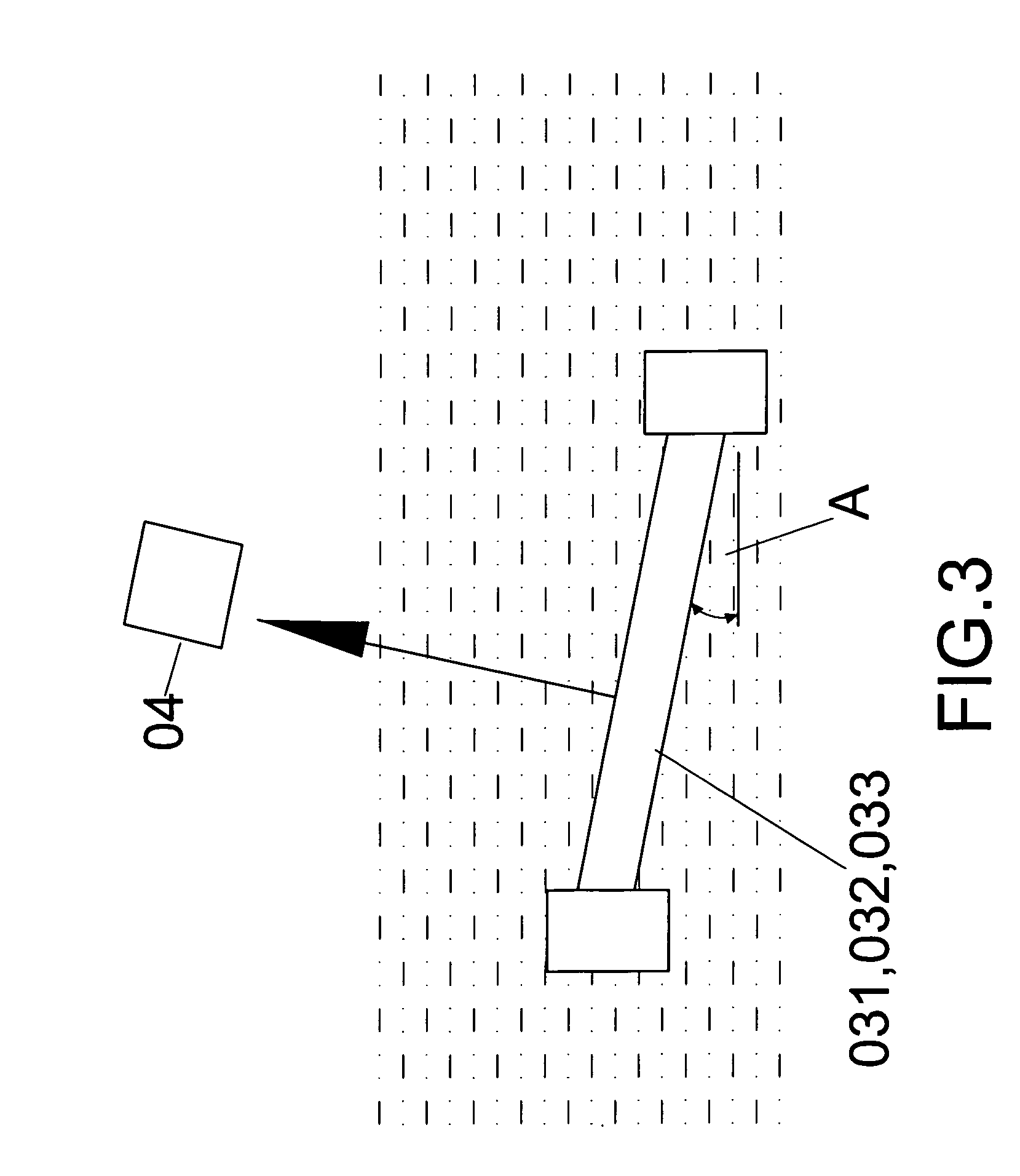Hydrogen fuel supply system
a technology of hydrogen fuel supply and hydrogen fuel, which is applied in the direction of electrochemical generators, machines/engines, mechanical equipment, etc., can solve the problems of difficult storage, high cost of hydrogen acquisition, and the inability to use reaction equipment in industrial equipment, such as hydrogen internal combustion engines or hydrogen power generators, to achieve the effect of quick supply
- Summary
- Abstract
- Description
- Claims
- Application Information
AI Technical Summary
Benefits of technology
Problems solved by technology
Method used
Image
Examples
example 1
[0081] (A) The feed speed of methanol aqueous solution: 70 g / min. [0082] (B) The inlet speed of air: 24.49 g / min. [0083] (C) Ratio of molecular number of water / methanol: 0.8 [0084] (D) Temperature of catalyst steam reactor: 480° C.
[0085] Test result: By measurement of Gas Chromatograph and Float type flow meter, 64% of H2, 23% of CO2 and 12% of N2 are obtained. The production rate of Hydrogen is 8 g / min.
example 2
[0086] (A) The feed speed of methanol aqueous solution: 140 g / min. [0087] (B) The inlet speed of air: 52.6 g / min. [0088] (C) Ratio of molecular number of water / methanol: 0.75 [0089] (D) Temperature of catalyst steam reactor: 440° C.
[0090] Test result: By measurement of Gas Chromatograph and Float type flow meter, 64.5% of H2, 23.3% of CO2 and 11.6% of N2 are obtained. The production rate of Hydrogen is 17 g / min.
example 3
[0091] (A) The feed speed of methanol aqueous solution: 200 g / min. [0092] (B) The inlet speed of air: 132.3 g / min. [0093] (C) Ratio of molecular number of water / methanol: 0.6 [0094] (D) Temperature of catalyst steam reactor: 330° C.
[0095] Test result: By measurement of Gas Chromatograph and Float type flow meter, 59% of H2, 22.3% of CO2 and 18.1% of N2 are obtained. The production rate of Hydrogen is 25 g / min.
PUM
 Login to View More
Login to View More Abstract
Description
Claims
Application Information
 Login to View More
Login to View More - R&D
- Intellectual Property
- Life Sciences
- Materials
- Tech Scout
- Unparalleled Data Quality
- Higher Quality Content
- 60% Fewer Hallucinations
Browse by: Latest US Patents, China's latest patents, Technical Efficacy Thesaurus, Application Domain, Technology Topic, Popular Technical Reports.
© 2025 PatSnap. All rights reserved.Legal|Privacy policy|Modern Slavery Act Transparency Statement|Sitemap|About US| Contact US: help@patsnap.com



